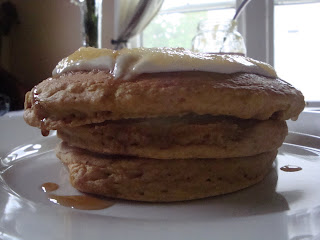
I've never been a fan of cauliflower. I always thought is was bland and boring.I tend to simply ignore it. UNTIL I roasted it. Can you tell I have a thing for roasting vegetables? It's easy. You basically ignore them while they roast, and you can start washing prep dishes or make a salad. The flavor seems so deep while they're still nutrient-rich. Just ask Martha! They also soften up enough so a one-year old without molars can easily chew them. This is one of my newest and favorite quick meals. Definitely less than 40 minutes, and it will be on the table. Most of that time is just waiting for noodles and vegetables to cook.
INGREDIENTS:
6-8 cups cauliflower and broccoli florets (about 3 small to medium heads)
1 lb whole wheat spaghetti (or udon or soba noodles)
1/2 to 3/4 cup your favorite Thai-peanut sauce*
about 6 leaves of fresh basil, chopped for garnish (or handful of chopped cilantro or parsley)
sesame seeds for garnish
olive oil for drizzling
salt and pepper to taste
Preheat oven to 400 degrees. Place cauliflower and broccoli florets in a 9x13 baking dish. Spread out in a single layer. Drizzle with 2-3 Tablespoons of olive oil to evenly coat. Sprinkle with salt and pepper. Roast for 20-25 minutes until lightly browned. Meanwhile, bring large pot of water to a boil. Cook noodles for 10 minutes. I like using metal tongs to stir the noodles, so they don't stick together. They're also a great tool for tossing and mixing all the ingredients for this recipe. Prep the peanut sauce while veggies are roasting and noodles are boiling. Reserve ½ cup of the pasta cooking water to think out peanut sauce (see note below.) Once noodles, sauce and veggies are done toss all together. Garnish with basil and sesame seeds. Serve with lightly-steamed green beans tossed with sesame oil and tamari on the side.
*This recipe is pretty close, but reduce the ingredients by half. For a pound of noodles, I've found 1/2 to 3/4 cup (including water to thin it out) of peanut sauce is enough. I used Ken Haedrich's recipe in his Feeding the Healthy Vegetarian Family. I add about 1/3 cup of the pasta's hot boiling water to thin it out, so it is easier for the kids to eat and much easier to distribute all over the noodles.








